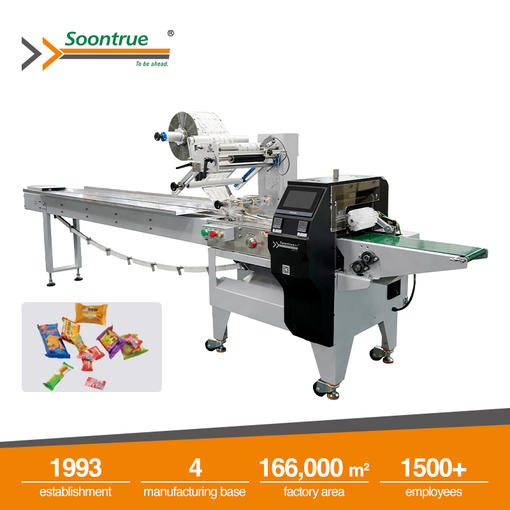How Does Automatic Packaging Machine Work?
Efficiency and accuracy are critical for firms to remain competitive in today's fast-paced world of production and distribution. Automated packing machines are an important part of this procedure. These sophisticated devices have revolutionized the packaging industry by streamlining the packaging process, reducing errors, and increasing productivity. In this article, we will explore how the automated packaging machines work.
Components Of Automated Packaging Machines
Automated packaging machines are complex systems composed of various components that work together seamlessly. Here are the key components:
Feeding System: The feeding system is responsible for supplying the packaging materials, such as cardboard boxes, plastic bags, or containers, to the packaging machine. It can employ a variety of mechanisms, including conveyor belts, vibrating feeders, or robotic arms.
Filling Mechanism: This component accurately measures and dispenses the product into the packaging material. Depending on the product, augers, volumetric fillers, or piston fillers may be used.
Sealing And Closing System: Once the product is inside the packaging, the machine must seal and close it. This can be accomplished using a variety of ways, including heat sealing, adhesive, or mechanical closure mechanisms.
This is necessary for product tracking and identification. This is essential for tracking and identifying products. Labeling can be done using stickers, inkjet printing, or thermal transfer.
Inspection And Quality Control: Sensors and cameras are frequently used in automated packing equipment to examine packages for flaws or to verify the right quantity of goods is present.
Control Panel And Software: The control panel and software are the brains of the operation. Operators can input packaging parameters and monitor the machine's performance through the control panel. Modern devices frequently include user-friendly interfaces for simple settings and troubleshooting.
How Do Automated Packaging Machines Work?
Here is the process of them:
Material Loading: The process begins with loading the packaging material into the machine. Depending on the equipment and its settings, this can be done manually or automatically.
Product Filling: The product is then accurately measured and dispensed into the packaging material. This procedure is essential for ensuring uniformity in the amount of product in each package.
Sealing And Closing: The machine seals and closes the package using the appropriate method, whether it's heat sealing, adhesive, or another mechanism. This step ensures the product is securely contained.
Labeling and Coding: If necessary, the machine labels the package with product information or codes it for tracking purposes. This stage is very critical for traceability and regulatory compliance.
Inspection and Quality Control: Automated packaging machines often feature sensors and cameras that inspect each package. They may inspect for flaws, verify the correct number of items, and spot any problems throughout the packing process.
Packaging Output: Finally, the packages are discharged from the machine, and ready for storage, distribution, or further processing.
Conclusion
Automated packaging machines have transformed the packaging industry, offering increased efficiency, precision, and cost savings for businesses.Their intricate components and seamless operation make them indispensable tools for a wide range of industries. If you are looking for a trusted packing machine supplier, Soontrue is your good choice! Please feel free to contact us for more product details now!



